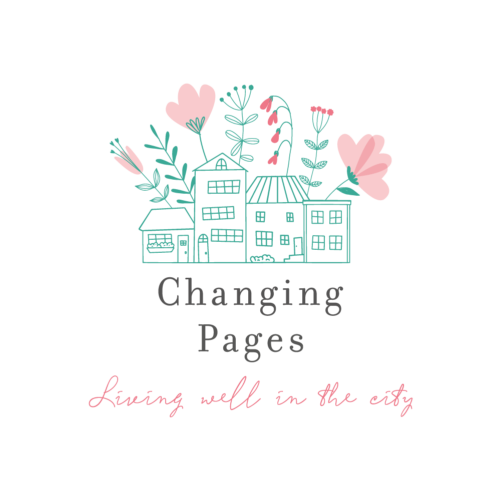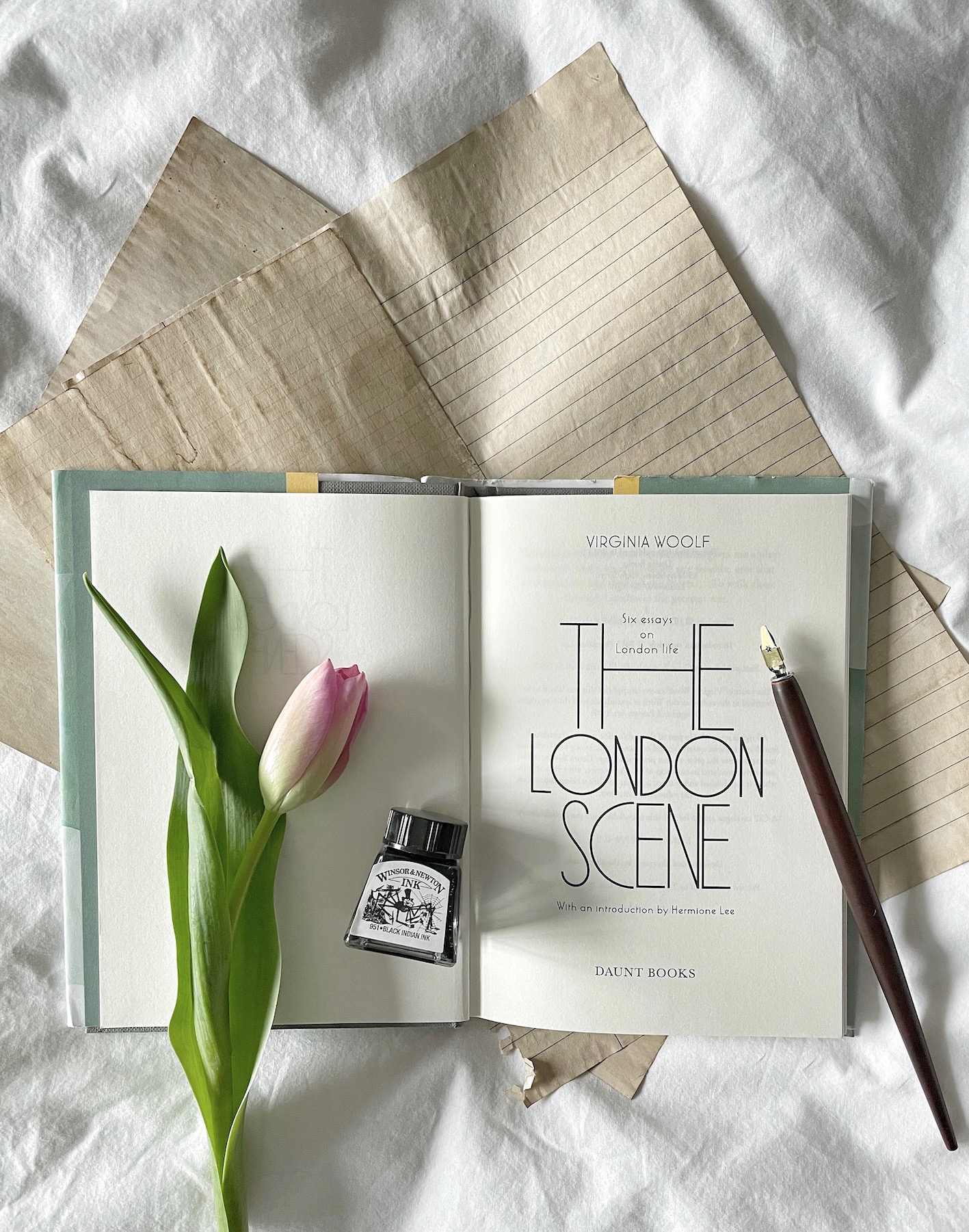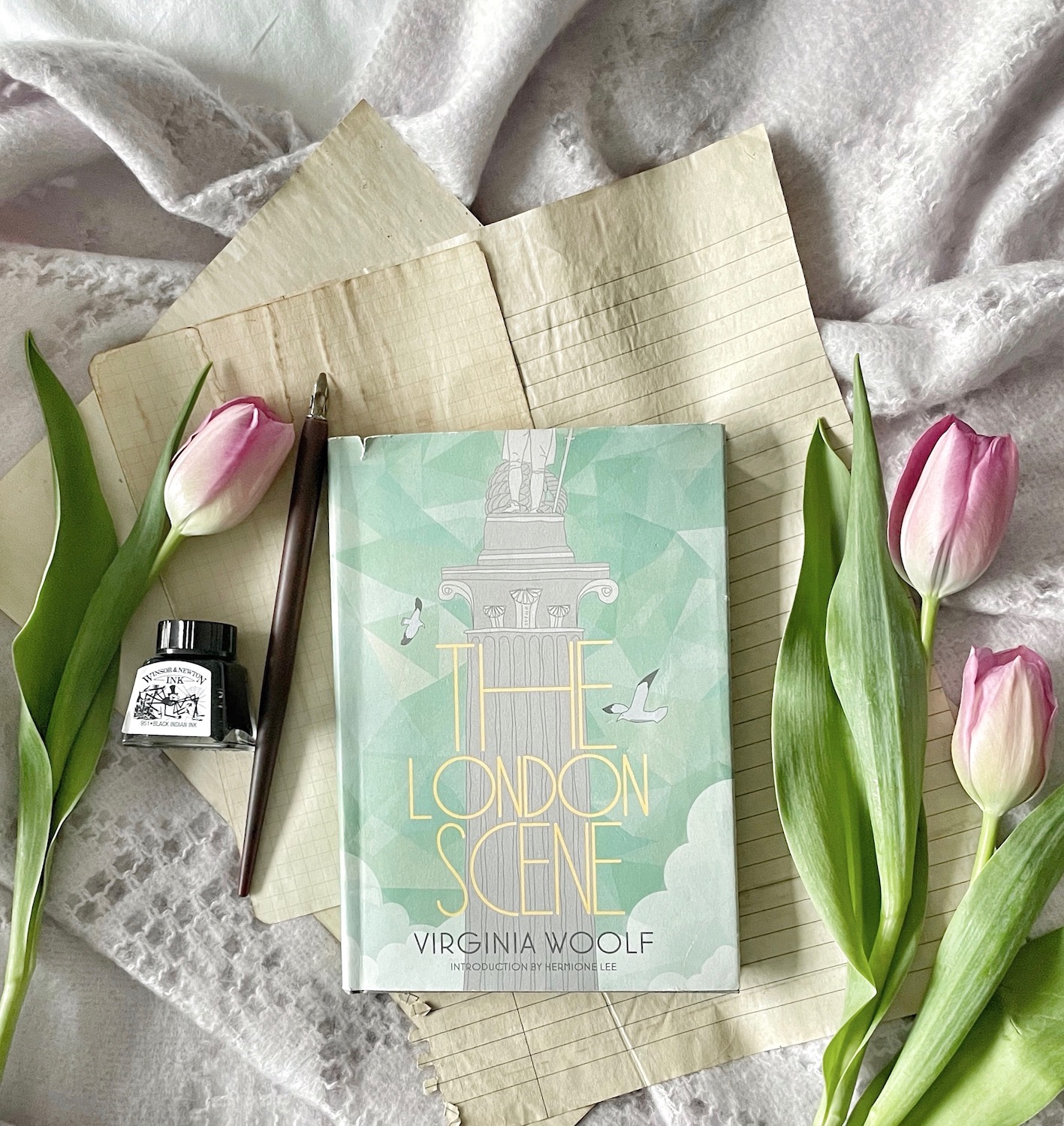You know how they (whoever they are) always say ‘don’t judge a book by its cover’. Well I always do, and it was the beautiful cover of this book I spotted even before I realised it was written by Virginia Woolf. It also happened to have the word ‘London’ in the title which is another guaranteed selling point for me. The more I learn about Virginia Woolf, the more fascinated I am by her so there was never any question that I wasn’t going to buy this book when I found it in Daunt Books a few years ago.
Virginia Woolf was a London native. She grew up in Kensington. After her marriage to Leonard Woolf in 1912 she lived just off Fleet street, and she famously lived and worked in Bloomsbury for a number of years. After some years in Richmond where she lived when her health was poor, she eventually returned to Tavistock Square where she lived and worked until the war.
Virginia loved to walk around London. She drew inspiration from watching the city and its people, and was infinitely fascinated by the chaos of life in the city.
” I like this London life in early summer – the street sauntering and square haunting’
– Virginia Woolf from her diary Aril 1925
In 1931, The London Scene, a collection of 6 essays by Woolf were published individually in Good Housekeeping, over the course of a year. They were not published as a collection until long after her death, as they were not felt to be significant enough during her life time.
The six essays cover a diverse selection of places. which I think is partly what makes them such fun to read.
The collection opens with The Docks of London, where she writes that all the ships of the sea pass through the port of London. Majestic ships from the world over arrive full of romance and promise. As soon as they “huddle in the land that has become flat and shiny mud”, the romance is gone. London at first sight is a dismal place.
The ships bring treasures from faraway shores. Bartering and sales takes place in the docks of The Thames before those same goods are transported to Oxford Street where they are refined and prepared for sale.
Even then, Oxford Street was not London’s finest, but it contained a certain wonder which some may feel is still present today.
“In Oxford street there are too many bargains, too many sales, too many goods marked down to one and eleven three, that only last week cost two and six. The buying and the selling is too blatant and raucous. But as soon as one saunters towards sunset – and with artificial light and mounds of silk and gleaming omnibuses, a perpetual sunset seems to set over the Marble Arch – the garishness and gaudiness of the great rolling ribbon of Oxford Street has its fascination.”
In Great Mens Houses, she compares houses such as The Carlyles in Cheyne Square with John Keat’s home in Hampstead
“The voice of the house – and all houses have voices – is the voice of pumping and scrubbing, of coughing and groaning”
In Abbeys and Cathedrals, the vast size and space and serenity of St Paul’s cathedral, is contrasted with Westminster Abbey which is narrow and pointed, worn restless and animated. Woolf concludes, the only truly peaceful places in London are the old graveyards which have become gardens and playgrounds
“These garden graveyards are the most peaceful of our London sanctuaries and their dead the quietest”
The House of Commons is depicted as a place for the argumentative and privileged men who govern. Woolf questions how these same men could ever be turned into the elegant statues which grace Parliment Square
In the concluding essay ‘Portrait of a Londoner’, the fictional Mrs Crowe sits in her front drawing room. Mrs Crowe had numerous visitors but she despised tete-a-tetes. No intimacies for her. She thrived on the gossip and news which was given and received as all of London passed through and came together in her presence
This is a lovely insight into 1930’s London but it is also a picture of a London which remains largely recognisable today. I love returning to these essays and find them a useful way of considering London on my own street sauntering and square haunting.
You can buy The London Scene and support independent bookshops here.





How wonderful, I had no idea she wrote this collection. One more to add to the London list!
Author
You would love this Scarlett. Its such an interesting and amusing read
The way she saw the London Docks would have been exactly how my Father would have seen them at the beginning and end of his various long voyages in the late 20’s early 30’s! Banana boats come to mind.
Author
Oh yes, of course. Thats fascinating. I shall re-read that essay now with renewed interest xx
What a lovely walk with Virginia through London. Adding this to by TBR list stat. Thank you for the inspiration. 💗
Author
It’s such a great book Carla, a real insight in to London then and inspiration for where to walk now.